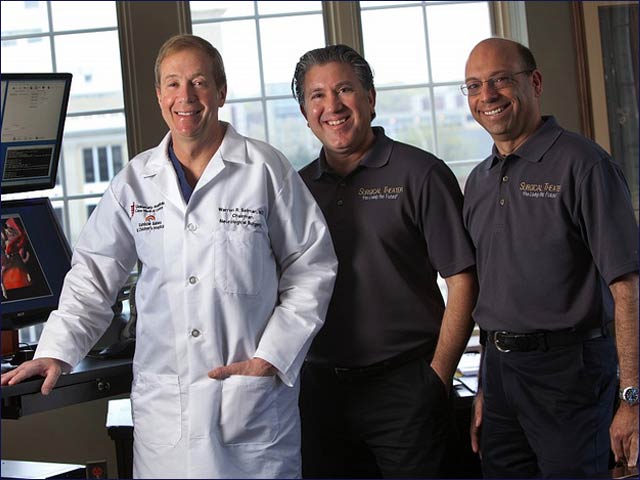By Avigayil Kadesh
If you or a loved one needed brain surgery, wouldn’t you rest easier if the surgeon had practiced your specific procedure to perfection before making the first incision?
Thanks to Israeli ingenuity, this scenario is not only possible, but is already playing out in teaching hospitals in the United States.
The Selman Surgical Rehearsal Platform (SRP) neurosurgery simulator is based on cutting-edge Israeli flight simulation knowhow, further developed for the operating room by former Israel Air Force officers Moty Avisar and Alon Geri.
The SRP allows surgeons to plan and rehearse microsurgical techniques by generating 3D images from standard patient imaging such as CT and MRI scans – in the same way that pilots practice prior to flying complex missions.
The program accurately models interactions between life-like tissue and surgical instruments so that the surgeon can experience ahead of time how the delicate structures in the patient’s brain will respond. Participants anywhere can simultaneously view and practice the same case with real-time feedback, and collaborate on planning an operation.
The groundbreaking product is named after Dr. Warren Selman, chief neurosurgeon at University Hospitals Case Medical Center and chairman of neurological surgery at Case Western Reserve University School of Medicine in Cleveland, Ohio.
"Being able to collaborate with peers and guide younger surgeons through a complex neurosurgical procedure — on a model with life-like responses — before taking the patient to the operating room is ideal,” Selman said. “It's something that just wasn't possible until now."
Overheard in a coffee shop
Back in 2009, Selman overheard Avisar discussing flight simulator technology while waiting in line at a coffee shop. He joined the discussion and eventually helped to start a company, Surgical Theater, and to put the same concept to work in the medical field.
“It’s a Midwest culture, so strangers talk with each other in line,” jokes CEO and President Avisar, who has master’s degrees in systems engineering, electrical and computer engineering and business. “It intrigued him to hear what flight simulators can do, and he wanted to know more about our background.”
 From left, Dr. Warren Selman, Moty Avisar and Alon Geri
From left, Dr. Warren Selman, Moty Avisar and Alon Geri Photo by Keith Berr Photography
After three years of intensive R&D, the SRP was launched at the Congress of Neurological Surgeons in October 2012, where it was selected as a “new technology to watch.” Around the same time, the company received patent approvals for the technique of turning static medical imagery into a dynamic model.
Even before the SRP was cleared by the US Food and Drug Administration (in February 2013), the system was already on the market for training surgical residents using a “library” of images from typical case studies.
“Now that it’s cleared, surgeons can upload images from the next day’s patients and rehearse,” says Avisar.
Selman and Dr. Fred Meyer, from the famed Mayo Clinic in Minnesota, are establishing a long-distance collaboration with Israeli surgeons and medical students supervised by Dr. Moshe Hadani – chief of neurosurgery at Israel’s Sheba Medical Center at Tel Hashomer – to further test the SRP’s capabilities as a teaching tool. Dr. Ran Harel, a Sheba spine surgeon who did his fellowship at Case Western, is the Israeli consultant for the company.
‘They feel they are in the OR’
“The majority of translating what we knew from flight simulation to surgery was to understand more about what realism means,” says Avisar.
“In flight, it’s about the sun and the shadows of trees and mountains. In surgery, it’s more about how light reflects off tissue and how a surgeon understands depths and distances. It took us a while to understand how to translate a simulation into a realistic model. But according to surgeon feedback, we are there. They feel they are in the OR.”
Currently, the platform is under further research for use in more complex cases as well as spinal surgery. Leading the clinical study is Dr. Andrew Sloan, director of University Hospitals Neurological Institute Brain Tumor and Neuro-Oncology Center and associate professor of neurosurgery at Case Western Reserve University. The study is expected to be completed by the end of the summer (2013).
The privately held company also has an office in the Tel Aviv suburb of Ramat Gan.